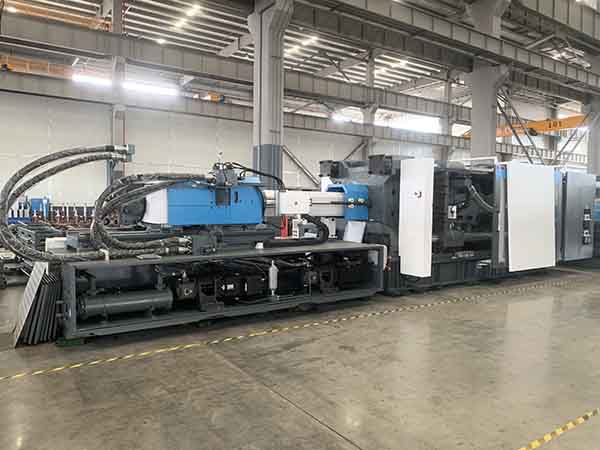Injection Molding Machine and Oil Pipeline Manufacturing: The Perfect Combination of Technological Innovation and Market Demand

With the continuous development of technology, the injection molding machine and oil pipeline manufacturing industries are also constantly innovating and developing. These two industries play a significant role in their respective fields, and their technological advancements and changes in market demand are crucial for the overall development of the manufacturing industry. This article will provide a detailed analysis of the current status, technological innovations, and market demands of the injection molding machine and oil pipeline manufacturing industries, aiming to provide valuable insights for relevant companies and individuals.
1、Current Status of Injection Molding Machine and Oil Pipeline Manufacturing Industry
An injection molding machine is a device used to manufacture plastic products and is widely used in various industries such as automotive, home appliances, medical devices, etc. According to market survey data, the global injection molding machine market has been steadily growing in recent years and is expected to reach approximately $10 billion by 2025. During this process, the technology of injection molding machines has continuously innovated, evolving from single-cylinder machines to multi-cylinder, fully electric, servo-driven, and other high-efficiency energy-saving types of machines.
Oil pipelines are an essential component of the oil transportation system, mainly used to transport crude oil, refined oil, and other products from production sites to consumption areas. With the growth of global energy demand, the oil pipeline manufacturing industry has also experienced rapid development. Currently, the global oil pipeline market exceeds $100 billion, and it is expected to maintain steady growth in the coming years. During this process, the technology of oil pipeline manufacturing has also continuously improved, transitioning from traditional steel pipe manufacturing to new high-strength, corrosion-resistant, and wear-resistant materials for oil pipelines.
2、 Technological Innovations in Injection Molding Machines
A. Energy-Saving Injection Molding Machines
With the increasing awareness of environmental protection, energy-saving injection molding machines have become an important trend in the industry’s development. These machines employ advanced technologies such as high-efficiency motors, frequency converters, and precise control of electrical energy consumption, significantly reducing energy consumption. Additionally, energy-saving injection molding machines also feature innovative designs for new hydraulic systems and cooling systems, further improving the overall energy efficiency ratio of the machines.
B. Fully Electric Injection Molding Machines
Fully electric injection molding machines are a new type of product in the injection molding machine industry in recent years. They utilize fully electric servo-driven technology to achieve precise control of critical actions such as injection, clamping, and ejecting. Compared to traditional hydraulic injection molding machines, fully electric injection molding machines offer higher energy efficiency ratios, lower noise levels, and smaller vibrations, gradually becoming the mainstream product in the market.
C. Intelligent Injection Molding Machines
With the advent of Industry 4.0, intelligent injection molding machines have become a new direction for industry development. These machines integrate sensors, controllers, actuators, and other devices to achieve real-time monitoring and intelligent control of the production process. Furthermore, intelligent injection molding machines can leverage big data analysis and cloud computing technologies to deeply mine and optimize production data, improving production efficiency and product quality.
3、 Technological Innovations in Oil Pipeline Manufacturing
A. High-Strength Steel Pipes
As the pressure rating of oil pipelines continues to increase, there is a growing demand for steel pipes with higher strength requirements. High-strength steel pipes employ advanced production processes and materials that offer higher compressive strength, impact resistance, and corrosion resistance, meeting the needs of high-pressure oil pipelines.
B. Corrosion-Resistant Steel Pipes
Oil pipelines need to withstand various harsh environments during transportation. Corrosion-resistant steel pipes use special alloy materials and coating processes to effectively improve the corrosion resistance of steel pipes, extending their service life.
C. Wear-Resistant Steel Pipes
During operation, oil pipelines are subjected to factors such as water flow scouring and sandstone friction, leading to internal wall wear. Wear-resistant steel pipes employ special wear-resistant materials and coating processes to improve their wear resistance performance, reducing maintenance costs for pipelines.
4、Market Demand Analysis
4.1、Injection Molding Machine Market Demand
With the development of the global economy, the demand for injection molding machines in industries such as automotive, home appliances, medical devices, and others continues to increase year by year. In addition, with the improvement of environmental awareness and the implementation of energy-saving policies, the market demand for high-efficiency energy-saving injection molding machines, including those that are energy-saving, fully electric, and intelligent, will gradually increase.
4.2、Oil Pipeline Market Demand
With the growth of global energy demand, the construction scale of oil pipelines is continuously expanding, leading to a steady increase in the demand for oil pipelines. Furthermore, as the pressure rating of oil pipelines improves and the variety of transmission media increases, the market demand for high-performance oil pipelines that are strong, corrosion-resistant, and wear-resistant will also gradually increase.
In summary, under the dual drive of technological innovation and market demand, the injection molding machine and oil pipeline manufacturing industries will have a broader development space. Relevant companies and individuals should closely follow industry trends, seize opportunities in technological innovation and market demand, and make greater contributions to the development of the manufacturing industry.


